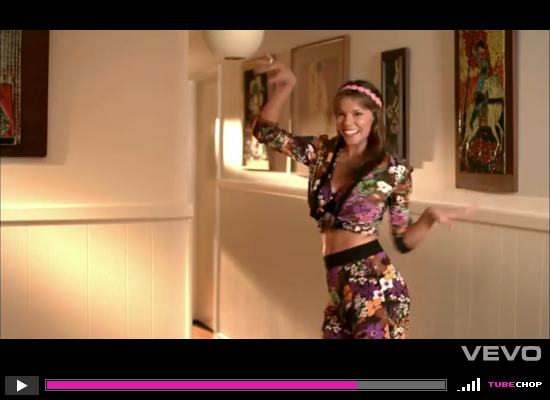Music (CI.2)

3-5.CI.2. use a variety of technology tools and applications to demonstrate his/her creativity by creating or modifying works of art, music, movies, or presentations
I Can

I can demonstrate my creativity by creating movies.
I can identify song lyrics that are family friendly.
I can modify movies with family friendly music.
I can identify song lyrics that are family friendly.
I can modify movies with family friendly music.
Lyrics

Commonsensemedia.org is a website that reviews and rates music.
If you see green, the review thinks the song is appropriate for kids ages 8 to 10.
Yellow means some content may not be right for some kids.
Red means not age appropriate for 8 to 10 year olds.
Let's start by browsing this site. After we browse, we'll do a search on the name of an artist that you think has some family friendly songs. Remember look for green AND 10 or younger.
This lyrics website can help you and your parents know what the words are in a song. Use this website with your parents to find a song with family friendly lyrics for your project. Remember to tell your parents that other students, (and maybe even teachers and the principal) will be hearing the song that you choose, so choose family friendly. Choose a family friendly song that you like and is meaningful to you.
Also make sure you get your parent's approval if you ever want to browse YouTube or TubeChop. Your parents might want to be there to guide you.
MP3 downloads can be bought from many sites on the internet. The most convenient for this project might be from Amazon.com. You can buy a song for just 99 cents! If you already have your song on a CD, MP3 or flashdrive in MP3 format, there is no need to buy the song. As for Ipod and Itunes, sorry, but that format does not work on our computers : (
If you see green, the review thinks the song is appropriate for kids ages 8 to 10.
Yellow means some content may not be right for some kids.
Red means not age appropriate for 8 to 10 year olds.
Let's start by browsing this site. After we browse, we'll do a search on the name of an artist that you think has some family friendly songs. Remember look for green AND 10 or younger.
This lyrics website can help you and your parents know what the words are in a song. Use this website with your parents to find a song with family friendly lyrics for your project. Remember to tell your parents that other students, (and maybe even teachers and the principal) will be hearing the song that you choose, so choose family friendly. Choose a family friendly song that you like and is meaningful to you.
Also make sure you get your parent's approval if you ever want to browse YouTube or TubeChop. Your parents might want to be there to guide you.
MP3 downloads can be bought from many sites on the internet. The most convenient for this project might be from Amazon.com. You can buy a song for just 99 cents! If you already have your song on a CD, MP3 or flashdrive in MP3 format, there is no need to buy the song. As for Ipod and Itunes, sorry, but that format does not work on our computers : (
Music Choice

Check out the music videos below. The songs below are just a few of my favorites and are good examples for 5th Grade students to consider when making a decision on which song to include in a project. Your choices are not limited to this list. Choices are not limited to "country" either.
1. Find a row of computers, create a team, choose a captain.
2. Captain choose a computer with a purple light on the speaker.
3. Team gathers around the captain's computer and chooses 2 videos to watch together.
4. Unplug the headset so your team can hear through the speaker.
5. Do you think the lyrics are family friendly?
6. Do you think the visuals are family friendly?
7. Anyone on the team can whisper "pause" to stop video and discuss "family friendly".
8. Keep discussion volume low enough so you can keep the speaker volume low too.
9. Decide which of the 2 songs would work best for someone's project.
10. Be ready for a "fish bowl" discussion with the class.
11. Plug headsets into any of the two ports on the side of the speaker.
1. Find a row of computers, create a team, choose a captain.
2. Captain choose a computer with a purple light on the speaker.
3. Team gathers around the captain's computer and chooses 2 videos to watch together.
4. Unplug the headset so your team can hear through the speaker.
5. Do you think the lyrics are family friendly?
6. Do you think the visuals are family friendly?
7. Anyone on the team can whisper "pause" to stop video and discuss "family friendly".
8. Keep discussion volume low enough so you can keep the speaker volume low too.
9. Decide which of the 2 songs would work best for someone's project.
10. Be ready for a "fish bowl" discussion with the class.
11. Plug headsets into any of the two ports on the side of the speaker.
Male Artists |
Female Artists |
Tube Chop Videos
The videos below had small parts that were not "family friendly" chopped off. When you choose a song for your project, the whole song's lyrics must be family friendly. Since your projects will not contain any of the videos visuals, you won't have to concern yourself too much with the visuals. Usually when the lyrics are family friendly, the visuals tend to be family friendly as well.
Whatever song you choose for your project, make sure you run it by your parents. Make sure you let your parents know that other students will be hearing the song you choose as well as teachers and maybe even the principal. Songs choices with parents are sometimes different when they know more than just your ears will be listening to the lyrics.
Whatever song you choose for your project, make sure you run it by your parents. Make sure you let your parents know that other students will be hearing the song you choose as well as teachers and maybe even the principal. Songs choices with parents are sometimes different when they know more than just your ears will be listening to the lyrics.

